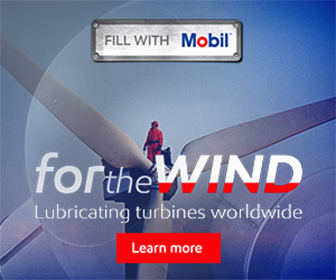New Wind Energy Solution Offers Gains for Small Farms
Airfoil Generators, a pioneering Wisconsin-based company, can increase the power available in the wind by 8 times for small farms worldwide; this patented technology gives small farms the opportunity to capture more energy for a massive increase in power.
“We are pro-wind, to put it simply,” said CEO of Airfoil Generators, Carl Fausett, “particularly because of its low impact on land use. Other solutions often occupy valuable crop-growing areas, limiting agricultural potential. In contrast, our mid-sized wind energy systems offer a more sustainable solution, as they can seamlessly coexist with crops, and can be located right on the farm near where the electricity is needed. This allows farmers to maximize both energy production and land use efficiency.”
According to Fausett: “The power available in the wind increases with the cube of wind speed; meaning that doubling the wind speed increases the power available by a factor of eight. So, even if 100% of the maximized energy can’t be fully captured, the net total outcome is a game-changer.”
In an era of increasing debate over the effectiveness and reliability of renewable energy, Fausett wants to break through with a solution that offers substantial gains for small farms. Airfoil Generators, led by Fausett, has introduced a cutting-edge wind energy system that fills the gap between macro and micro wind generators. With their innovative M18 and TWINS models, the company’s patented design will bring affordable, scalable power directly to rural farms.
Until now, small farmers were not always able to take advantage of local wind energy to be off-grid, more independent and energy efficient.
Wisconsin’s own, Fausett was born in the land of cheese and dairy, has his eye on something much more invisible: “It’s right in front of our faces and we can see it,” said Fausett. “With Wisconsin having the highest percentage of small farms as a proportion of all farms in the State. None of our neighbors (including Illinois, Iowa and Minnesota) can boast of such a high proportion of small farms in the area.”
(Em)powering the Small Farmer
Note that the wind approaching the nose of our airfoil is at 15 MPH (blue) – but after it contacts the airfoil – it immediately accelerates up to 32 MPH at the hump (red), where the turbine is located. Designed to perform in the core inner lands of the country where the most common wind speeds are between 8 to 18 MPH. Check out this comparison chart here showing how the Airfoil Generator’s design stacks up against other Horizontal and Vertical axis designs:https://airfoilgen.com/airfoil-generator-comparison.
Fausett says: “The bottom line is that I have created a way to increase wind velocity in order to take advantage of the increase in power. We like to be independent and off-grid out here.”
Fausett’s claims are based on computational results of the Airfoil Generator and comparing those outputs with actual results of real-world generators is tricky. “We know that generator output varies from the virtual world to the real world,” said the Wisconsin Engineer. “That is: when generators get built, they sometimes do not produce as much power as the computer simulations said they would. This is due to the drag of the bearings, inefficiency of the blades, the inverter or electronics, and other variables. That said, even if we sandbag the output of the Airfoil Solution design by 25% or even 50%, our results are still remarkable when compared to others of similar size.” Check out the fly-by video here: https://airfoilgen.com/fly-by-video/
Wisconsin: The New Wind Energy Capital of the U.S
Wisconsin has developed numerous wind farms over the past decade – particularly in the western and northern parts, where wind conditions are favorable – but small farms are not able to take advantage of wind energy. That is, until Fausett came along.
Wisconsin is known for its rural values of self-reliance and the resourcefulness of small farmers. However, according to the Department of Energy, only 12% of Wisconsin electricity came from renewable sources in March 2024, compared to 21% of Illinois’ electricity mix, 40% of Minnesota’s and 84%t of Iowa’s came from renewable sources.
“Clearly, we have more work to do,” said Fausett. “We can enable farmers to harness wind energy more effectively. We also have a great tradition here of preserving the land and natural resources, reflecting our state’s love for farming traditions and the great outdoors. I believe we start at home here in the U.S. and empower our small farms across the country.”
Additional Revenue Stream to Farms
To capture wind energy on small farms as an extra revenue stream, farm owners can install these mid-sized wind turbines on existing farm land and still keep their crops: “The playbook is simple: "Compared to solar farms that prohibit the use of the land for crops, these generators co-exist with crops, making better use of the land and two income streams for the famer from the same acreage."
Airfoil Generators | www.airfoilgen.com









